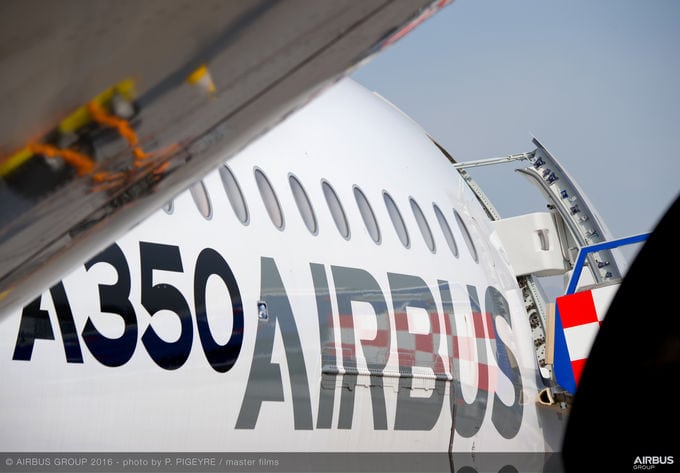 |
| Airbus showcased its highly-efficient A350 XWB aircraft during a stopover at FIDAE 2016, where the aircraft was on static display and performed high-profile flying presentations during the week. Photo: Airbus |
[Avionics Today 04-25-2016] Airbus has implemented a new industrial process that uses laser stripping to improve the return current from an aircraft’s electrical systems. The A350 XWB project teams applied this solution at Airbus’ Saint-Nazaire plant in France.
On the A350 XWB’s center fuselage section, all electrical systems are assembled outside of the aircraft and then integrated as a single unit throughout. In addition to this assembly, electrical tracks, called “raceways” — which carry the return current — are installed, with all connection points stripped to ensure strong conductivity. The stripping of connection points previously was performed using a manual screwdriver and a countersink cutter with micrometric stops; however, the results were not uniform, and it was difficult to ensure that measurements met Airbus standards. Moreover, this technique caused musculoskeletal disorders among operators’ aircraft.
“Due to these observations, a project was launched in 2015, and after testing an initial alternative, we selected a laser machine manufactured by Meliad,” said Airbus Project Manager Romuald Sibileau. “This consists of a laser generator, a PC and a dust extraction system. The laser operates within a closed booth, and a red light comes on near the door to warn those outside when the laser is in operation.”
The operator, having completed special training and wearing safety glasses and a mask, selects the stripping diameter, positions the raceway below the laser with the help of stops and a centering pin, presses on a pedal to start the operation, and then checks the result at the end.
Testing of the machine has been underway since February 2016, and Airbus claims the conclusions so far have been extremely positive in terms of the conductivity measurements, as well as the visual appearance and ease of use for operators.